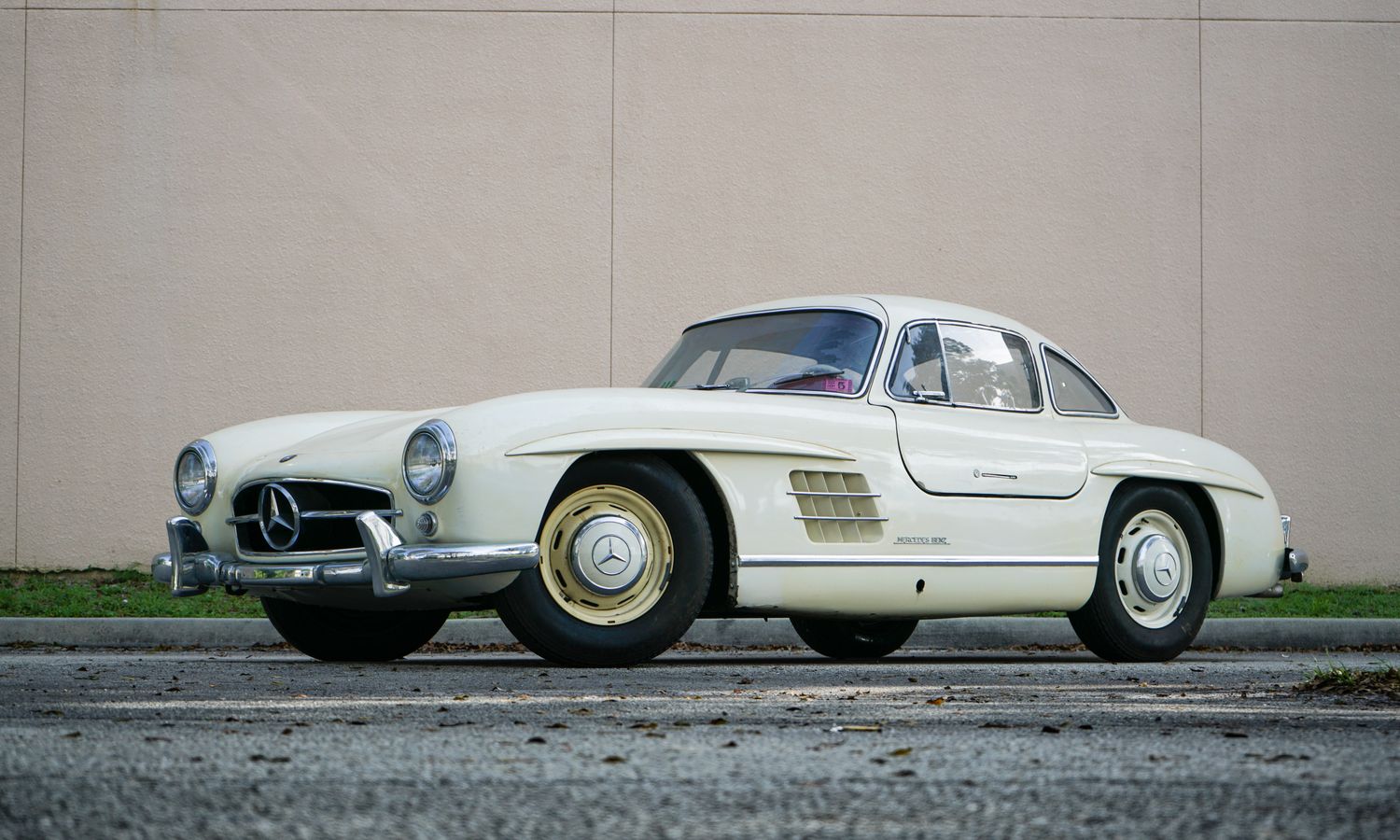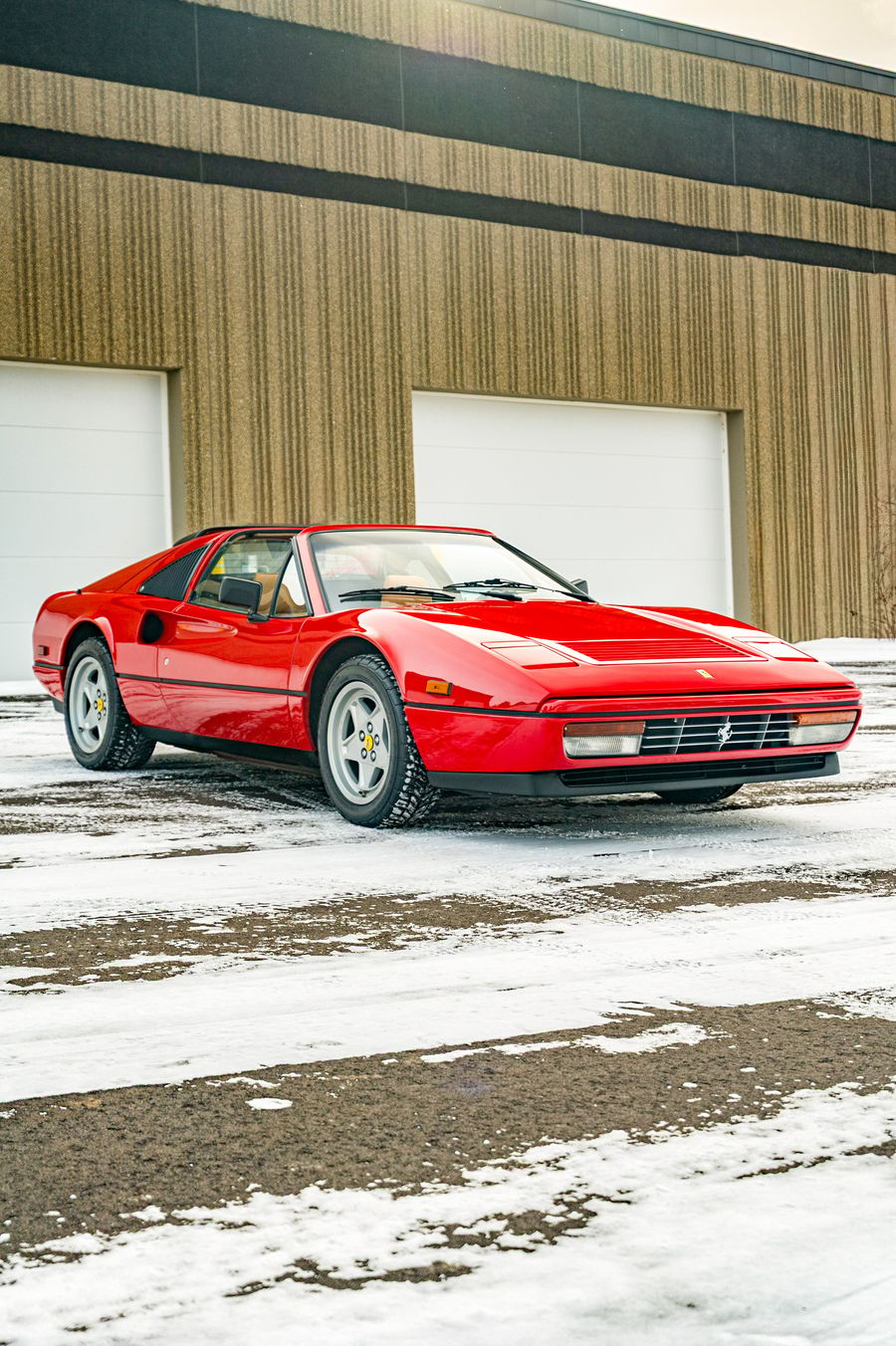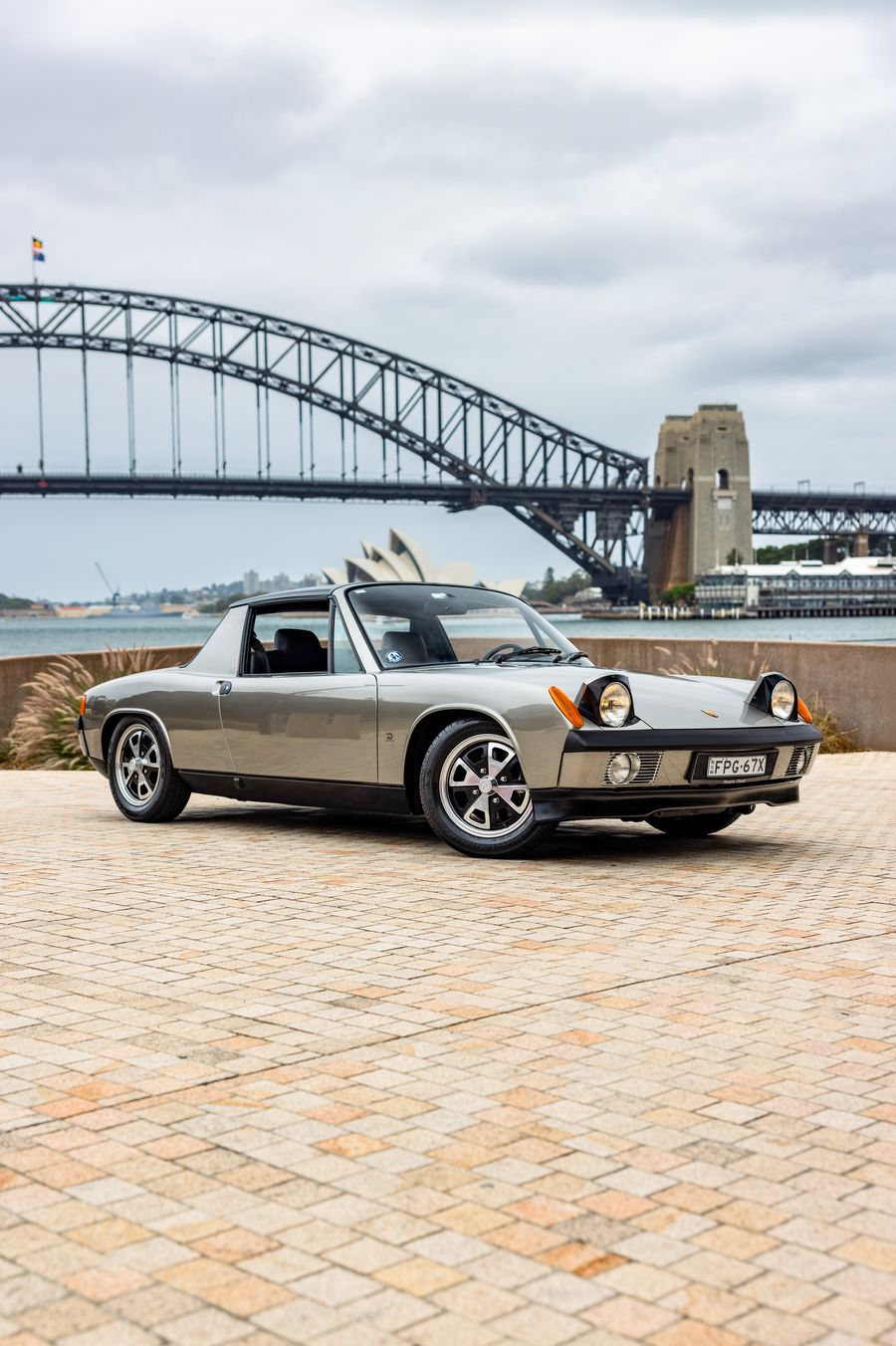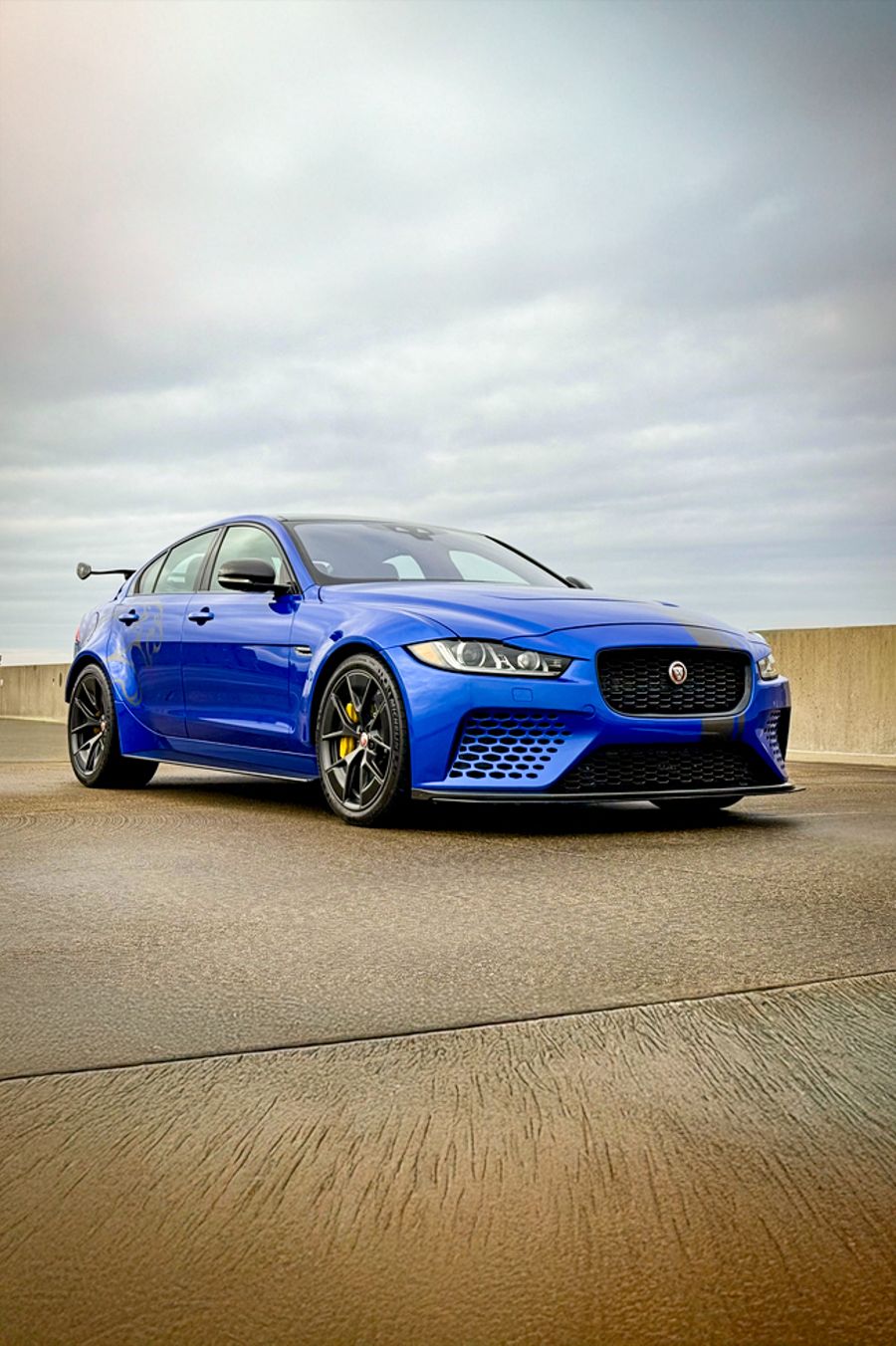- Sold This lot was sold privately after the auction finished on 9 May
- Ended 9 May at 7 PM
- Sold This lot was sold privately after the auction finished on 9 May
- Ended 9 May at 7 PM
Overview
The Mercedes-Benz 300 SL was created as a road-ready version of Mercedes’ successful endurance racecar of the early 1950’s. Mercedes gave special attention to its engine. The 300SL’s M198, 3.0 Litre SOHC, straight six-cylinder motor boasts a number of pioneering features for the commercial car market. This includes the dry-sump oiling system and a Bosch mechanical fuel-injection for increased performance. With power controlled by its four-speed manual transmission, the 300 SL was quick and fast. This 300 SL is equipped with quick-ratio steering and vacuum-assisted, finned, drum brakes for strenuous laps on a racing course.
This example, model number 55-00048, received several factory options, including leather interior, white exterior paint, bumper guards and a windshield washer system.
Mercedes 55-00048 is officially a 1955 model year example, and was completed in January of that year. The body and engine were produced in 1954. Upon leaving the Sindelfingen factory on January 29, it exhibited Mercedes ‘DB 50’ white lacquer paint with the optional Roser Red (1079) leather interior.
Although 55-00048’s original owner is unknown, its second owner was Vance Hollingsworth of Roanoke, Virginia is the USA, who owned a used car lot. Hollingsworth, “never bought anything new … and you never knew what he’d drive home,” his son-in-law, Tom Johnson, remarked. Hollingsworth used the 300 SL as a daily driver, according to Johnson.
Since 1979, this example has remained under single family ownership, spending most of its time in the garage and only driven on weekly half-hour drives. It currently registers 54,074 miles on the odometer.
This example has been well-loved and well-cared for with patina that adds to its charm. It is unrestored with a possible repaint and upholstery refinish but maintains its factory correct color and interior.
Because 55-00048 was a very early 1955 production car it features a number of 1954 model components:
- Concave Mercedes star grille
- Square bumper overriders
- Bolt-on wheel arches
- Treadle Vac brand brake booster
The interior features include:
- Rosa Red leather interior
- Full instrumentation
- Mechanical wind-up clock
Max Hoffman greatly influenced the corporate decision to adapt Mercedes-Benz’ successful W194 endurance racecar for public consumption. Hoffman, the U.S. distributor for Daimler-Benz, suggested that many an American driver would love to own their own “racecar.”
He was right. The 300 SL was a commercial success, particularly in America. Indeed over 80-percent of 300 SL’s produced were sold in the United States. Sold from 1954 to 1957, a total of 1,400 coupes were built. With a sticker price of $7,463 before options, the 300 SL was more than three-times the cost of the average family sedan.
From the twists and turns of the Mille Miglia Italian road race to the grueling La Carrera Panamericana of Mexico, the 300SL was successful in endurance racing. It took the first and second positions in such prestigious events as Le Mans, France, Berne, Switzerland and the Nürburgring, Germany. These racing events cemented the 300 SL’s track credentials and translated into public sales.
The economy of the Western world was recovering following World War Two. Money was flowing into the sport of automotive racing which was growing in popularity. Many drivers were now household names. One such racing celebrity was Sir Stirling Moss who won the overall title at the 1955 Mille Miglia in a 300SL. Although the field of sports cars was not crowded in 1950s, it was full of solid contenders. The 300 SL was a contemporary of such giants as the Aston Marton DB2/4 and the Ferrari 250GT.
Mercedes-Benz extolled in its advertisement the 300 SL as a “Product of a grand development.” The streamlined body was styled by Karl Wilfert. Although largely constructed of steel, aluminum was used for the hood, trunk lids and the skin of the doors. No exterior detail was wasted on frivolity. The distinctive wheel arches, called eyebrows, deflected road water from the windshield, improved aerodynamics and provided aesthetic symmetry with the fenders and quarter panels. To accommodate such a low side profile, the engine was angled at 40-degrees to fit under the hood.
With a racing-style tubular frame, the 300SL was a diminutive 2,855 pounds, hence the acronym, SL or Super Leicht. The frame was designed by Mercedes engineer Rudolf Uhlenhaut who had been involved in the corporate racing program since the 1930’s. From its four-wheel independent suspension with anti-roll bars to its vacuum-assisted finned drum brakes, the 300 SL was race-ready right off the show-room floor. The design of its chassis necessitated its now iconic ‘gullwing’ upward swinging doors. Due to the wide door sill, an ingenious tilting steering wheel was installed to allow the driver to take his or her position in the driver’s seat. With its fuel-injection and dry-sump lubrication system, the 3.0 litre engine had an impressive power to displacement ratio, providing a top-speed of 150 mph. This not only demonstrated its efficiency but also its technological advancement.
The 300 SL had all the ingredients of exclusivity with low production, high price and technological innovation. It was a status symbol as well as a performance car, boasting ownership by the likes of Clark Cable and the King of Jordan. The 300 SL is in a class of its own. Few cars have aged so well. This example would inspire envy on both the concours d’elegance show field and the racetrack. As Mercedes proudly proclaimed, the 300 SL is a “thoroughbred in every sense of the word … recognized by all enthusiasts as the “last word” in sporting automobiles.” These words still ring true today.




